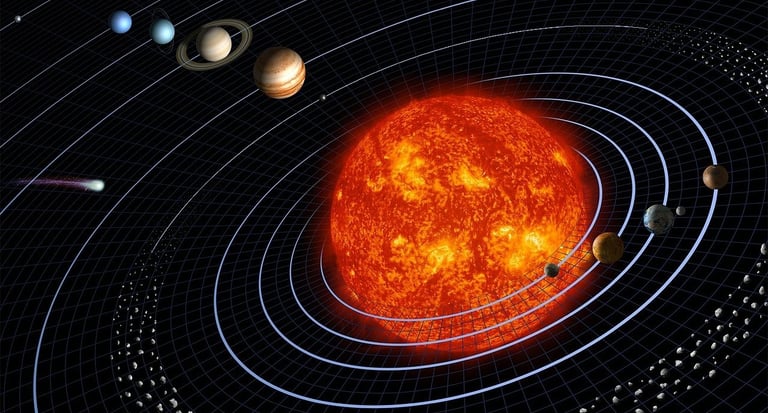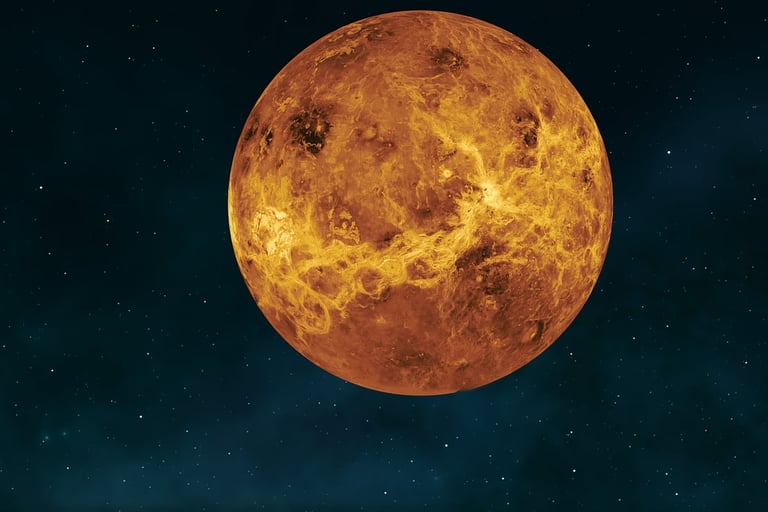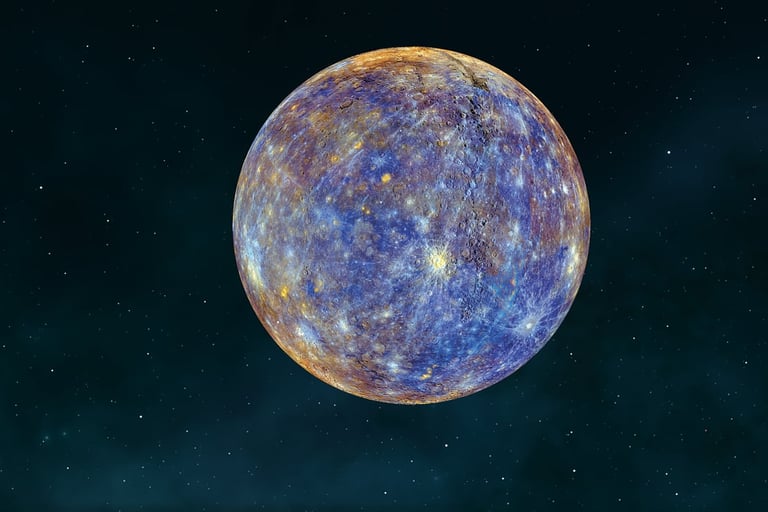Cosmic Wonders: Retrograde Venus and Mercury’s Backward Sun Illusion
Discover the captivating secrets of our solar neighbours Venus and Mercury, where time and motion defy expectations - one spins backward, and the other creates an illusion of a backward sun. Embark on a journey into the mysteries that make our solar system truly extraordinary.
CURIONIS


Have you ever wondered what it would be like if the Sun behaved in ways that defy your everyday experience? In our solar system, two planets stand out with their mind-bending motions that challenge everything we think we know about day and night. Venus and Mercury, our celestial neighbours, each play by their own rules—one spinning in reverse and the other creating an optical illusion that makes the Sun seem to dance backward. Let’s dive into these cosmic wonders and uncover the secrets behind their extraordinary motions.
Venus: Retrograde Rotation and the Inverted Sunrise
One of the most unusual characteristics of Venus is its retrograde rotation—it spins in the opposite direction to most planets. This means that if we were on Venus, the Sun would rise in the west and set in the east, which is the exact opposite of what we experience on Earth. Scientists suspect that a massive collision with a large object in the distant past may have reversed Venus’s original spin, resulting in this peculiar backward rotation.
In addition to its retrograde motion, Venus has an interesting relationship between its rotational and orbital periods. A full rotation on Venus takes 243 Earth days. However, because Venus orbits the Sun much more quickly—completing one revolution in 225 Earth days—the time from one sunrise to the next (a solar day) is significantly shorter, lasting only 117 Earth days. The forward movement along its orbit effectively cancels out part of the slow rotation, reducing the interval between sunrises.
To illustrate this, consider a person walking on a moving walkway at an airport. The overall speed of the person relative to the ground is a combination of their walking speed and the speed of the moving walkway. Similarly, while Venus takes 243 Earth days to complete one full spin, its orbital motion (completing a revolution in 225 Earth days) shortens the observed day to just 117 Earth days. This interplay between slow spin and rapid orbit makes Venus one of the most fascinating planets in our Solar System.*
*The difference between Venus's rotational period (243 days) and the time from one sunrise to the next (217 days) is due to its movement along its orbit around the Sun. As Venus rotates, it is also traveling around the Sun. Because of this orbital motion, a point on Venus's surface doesn’t need to complete a full 243-day spin relative to the distant stars to see the Sun in the same position again—it only needs to rotate enough so that, in combination with its orbital movement, the Sun appears at the same spot in the sky. In other words, the extra 26 days are effectively "cancelled out" by the fact that Venus is moving in its orbit.
Mercury: Spin-Orbit Resonance and the Illusion of a Backward Sun
Mercury exhibits a captivating celestial illusion due to its peculiar spin-orbit relationship. It takes Mercury 59 Earth days to complete one rotation, while its orbit around the Sun is completed in just 88 Earth days—a situation that results in a 3:2 spin-orbit resonance. This resonance means Mercury rotates 1.5 times for every orbit it makes, creating moments when its orbital motion interacts with its rotation in unexpected ways.
Because of this, the apparent motion of the Sun in Mercury’s sky is quite unusual. The Sun initially rises in the east as expected. However, as Mercury moves swiftly along its orbit, its orbital motion momentarily overtakes its rotation. This causes the Sun to slow down, appear to stop, and even briefly move backward before resuming its normal westward course and eventually setting.
Consider two runners on a circular track: one runner moves slowly, representing Mercury's 59-day rotation, while the other moves faster, representing its 88-day orbit around the Sun. As they both run, there are moments when the faster runner overtakes the slower one. To an observer fixed at a certain point on the track, it might even seem as if the slower runner is moving backward when the faster runner passes by. This scenario is analogous to what happens on Mercury. Because Mercury's orbital motion is so rapid compared to its slow rotation, the Sun in Mercury’s sky appears to slow down, come to a brief halt, and even move backward before continuing its usual westward path. This interplay between Mercury's rotation and revolution creates that striking optical illusion of a strange sunrise and sunset.
These extraordinary behaviours—Venus’s retrograde rotation resulting in an inverted sunrise and Mercury’s spin-orbit resonance creating a backward-moving sun—showcase the incredible diversity and complexity of planetary motions. They remind us that the mechanics governing our solar system are full of surprises, often challenging our intuitive perceptions of time and movement in space.
Subhalakshmi Buragohain
Hyderabad
Cosmic Whimsy: Venus twirls in reverse, and Mercury beams as the Sun rewinds.


Venus: The rebel planet where the Sun rises in the west.


Mercury: The closest planet, gleaming as the Sun briefly rewinds.
